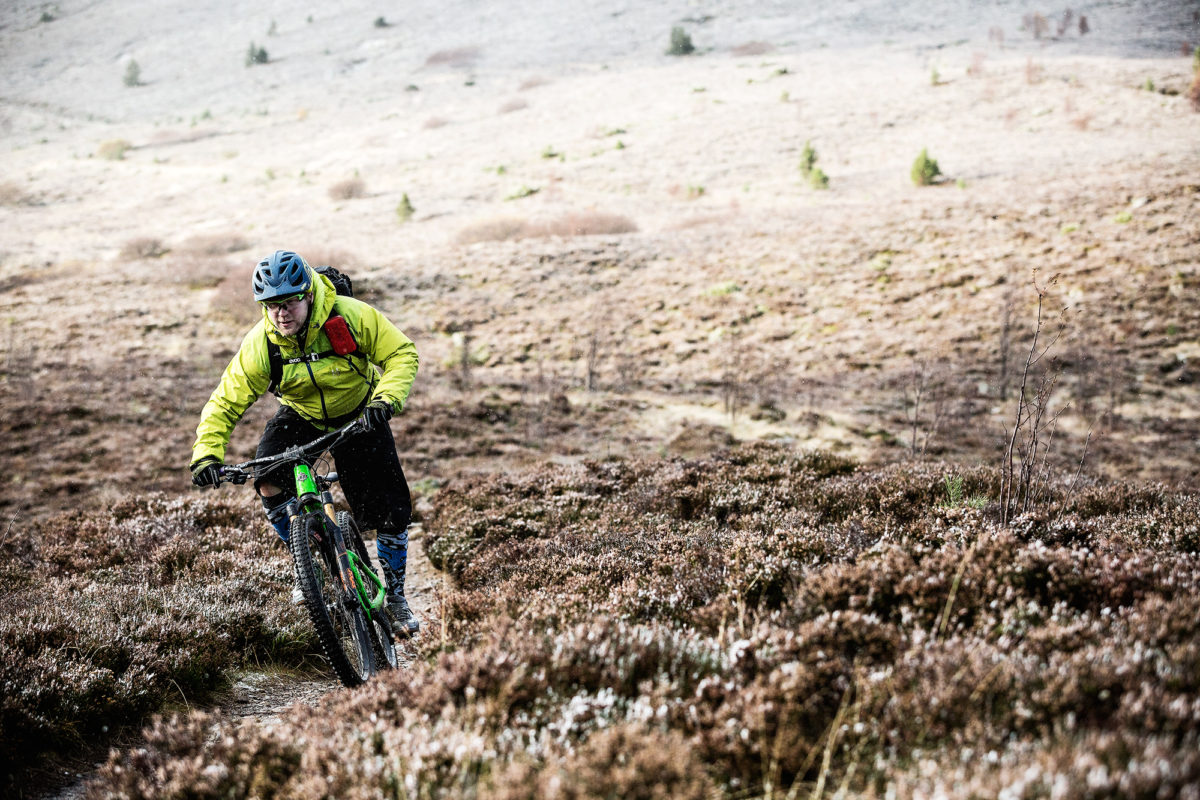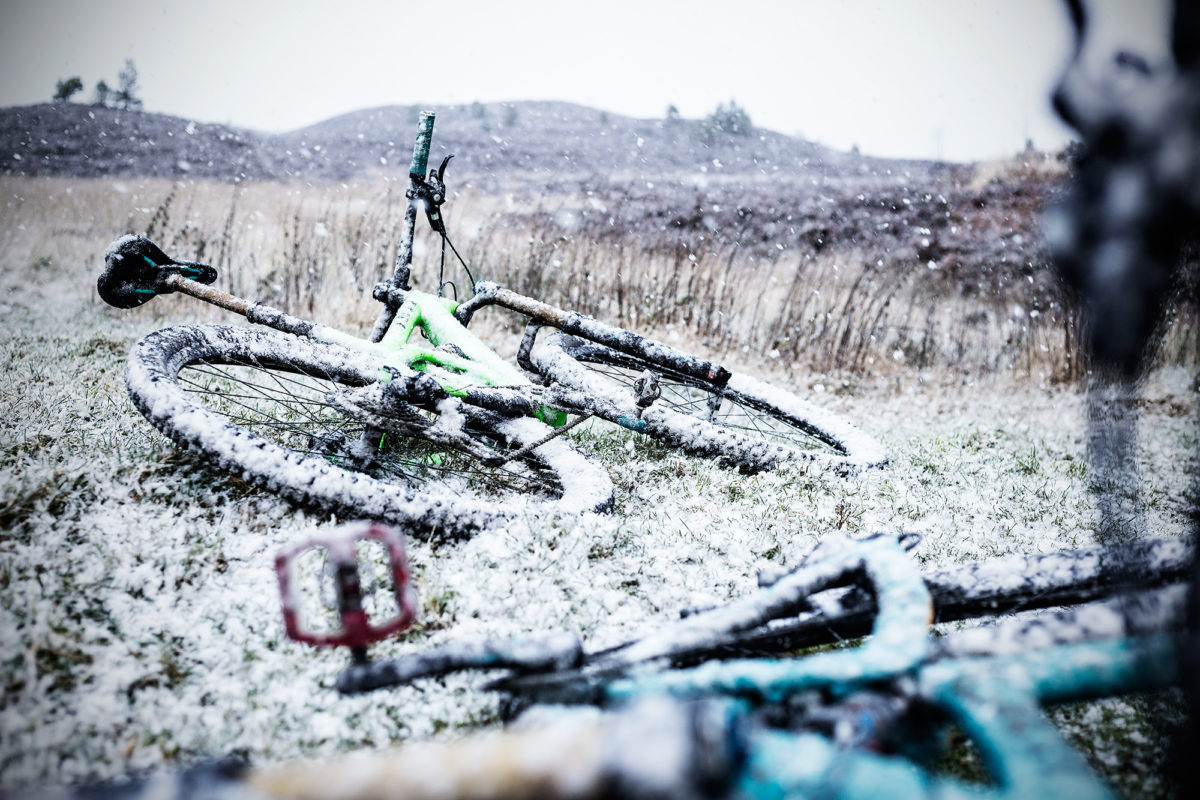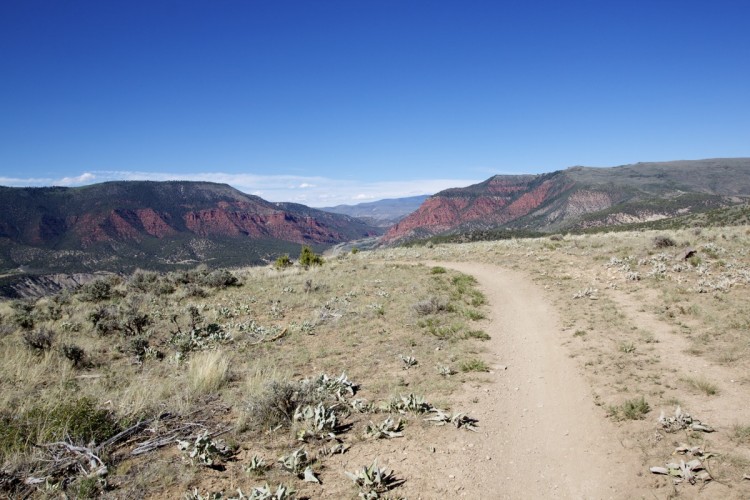
As my wife and I walked into a bar in Aviemore, Scotland, for a bite to eat, well after dark thanks to the 4pm sunset in early November, I was pretty surprised to bump into a Scottish guy wearing a legit kilt. While I guess I shouldn’t have been surprised to see a guy in Scotland wearing a kilt, over the course of our entire week in the country he would be the only Scot we would meet wearing traditional wardrobe.
While he seemed friendly enough, a swept-back Viking-style mohawk cut an imposing profile, reminiscent of Ragnar Lothbrok in Vikings. His face was creased from hard work in the sun and the cold, but it was mostly covered with a sharply-cut beard and tattoos near his eyes. Tattoos ran all the way down the rest of his body, covering lean, rippled muscles on his arms and legs.
When you see a Scot that looks like he’s straight out of Braveheart, nothing about his kilt serves in any way to remind you of a skirt–it is, undoubtedly, the garment of a true man.
I would have asked if I could take a selfie with him, but I was afraid he’d as soon rip my throat out as say, “Ok, sure!” to the tourist.
The Scottish are a breed apart, shaped into stronger, tougher, more resilient human beings by the wet, the cold, the lack of daylight, the long winters, and the steepness and the ruggedness of their mountains. At least, many of the Scots that live in the sparsely-populated remote northern regions have developed those admirable qualities. Those that live in the large cities of the Central Belt (despite the name, actually the southern reaches of Scotland, forming the border with England), where the majority of the population lives, could as easily be weak city-slickers as a hipster from Manhattan. But if you live in the Cairngorms, a harsher life will shape you into a stronger man–or crush you beneath the daily challenges that make up life in the North.
I learned how tough the Scots truly are on my first ride in Scotland, but this point was driven home 100% on day two.
[see_also id=”202895″][/see_also]
Mountain Biking a Corbett: Meall a’ Bhuachaille
Mountains in Scotland are classified via a unique naming system. While in Colorado we’re super original by calling any mountain over 14,000 feet a “14er” and any between 13,000 and 14,000 a “13er,” the Scots up the creativity ante by calling any mountain over 3,000 feet a “Munro.” There are 203 Munros (depending on how you count them), and they were named after “Sir Hugh Munro, 4th Baronet (1856–1919), who produced the first list of such hills, known as Munro’s Tables, in 1891,” according to Wikipedia. Next up are the Corbetts, which are peaks between 2,500 feet and 3,000–221 of those can be found in Scotland. And below that, you have 223 Grahams (2,000-2,500 feet). (Source)
Our goal for our second and final ride in Scotland was to ride up and over Meall a’ Bhuachaille, a Corbett rising to a height of 2,657 feet above sea level. Beginning from the town of Aviemore at 702ft, with several hills between us and the big mountains, we had our work cut out for us.
Our approach to the mountain was long but mellow, as we climbed slowly up a rocky doubletrack, passing the beautiful Green Loch along the way, where fairies are said to live in the hills and come out at random, to grant you one wish. So be thinking about what you most want in life as you pedal your way up this trail!


As we reached Rhyvoan Pass, we were surprised to see a herd of reindeer grazing around a stone building.
Yes, reindeer.

We had stumbled across one pod from the only wild reindeer herd in the entire United Kingdom–an absolute treat to creep as close as possible and snag a few pictures of this beautiful herd. Not only was this my first time seeing reindeer, but I got to experience them out in their natural habitat.

Shortly after the herd moved on, a cloud blew around the top of Meall a’ Bhuachaille, bringing with it an onslaught of heavy, wet snow. The combination of reindeer and snow had me craning my head around looking for Santa, but we were still about a month and a half too early. To escape the elements we ducked into the stone building, which I learned was called a “bothy.”


As we crowded inside, we saw that a couple of backpackers and their dog already had a fire going in the grate. Thankfully, the first rule of the bothy is that there’s always room for one more person. In our case, another dozen people.

After hunkering down for about 15 minutes and thawing out our freezing toes in front of the fire, the sky cleared and the guides decided that we should begin the final push for the summit.

But first, we had to brush about half an inch of wet snow off our bikes.


We began the final push–or rather, the carry–toward the summit. The trail wasn’t really a singletrack… it would be more accurate to describe it as a stone staircase leading up the mountainside. Some of us resisted carrying all the weight on our shoulders for a bit, but then eventually had to shoulder our rigs as we ascended the now-slick slabs of stone.





After about a half an hour of hike-a-bike, another cloud rolled in, pounding us with even more snow. The guides called another halt, and whipped out a big parachute-shaped piece of nylon, which they said was called a “bothy bag.”

“A what?” I said.
“You’ve never heard of a bothy bag?”
“We don’t have those in the States,” I replied.
Everyone looked at me kind of funny, as our lead guide, Chris Gibbs, explained how it works. “First we put the bothy bag over our heads, and position the bottom lip under our butts. Then on the count of three, we will all sit down on the edge of the bag, holding it open with our backs as we lean out against it.”
Wait, what exactly are we going to do now?
“One, two, three!” We all sat down, and I tried to follow the crowd.

We crammed about a dozen people in this size large bothy bag, and apparently the rules of the bothy apply even to bags, as our assistant guide, Mark, squeezed in after us.

After staying hunched over in the cramped, muggy bothy bag for about 15 minutes–but out of the cold snow and the wind–the current wave of snow broke, and we stood up, shaking off the accumulated snow and folding the bothy bag back up.
As our guides assessed the blowing clouds, they made the tough decision to abort our planned route. We were still at least another 45 minutes of hike-a-bike from the summit before we could begin our descent down the opposite side, so we turned our bikes around, pointing them back down the steep staircase of a trail–making sure to walk one very steep portion of steps.
I’m no stranger to mountain biking in the occasional snow storm, and despite how difficult the ride had been already, I knew how much I didn’t know. Namely, I had no idea how Scottish weather behaves, what the mountains in this region are like, and the challenges that the trail ahead had in store. While part of me wanted to push on, the other part of me just wanted to get back in the bothy and sit next to the fire.
[see_also id=”36403″][/see_also]
Our short, less than one-mile of fast descending back to Rhyvoan Bothy was steep, wet, and the trail was punctuated by sharp dragon’s teeth drainage features, just begging me to flat the tires on my tubed rental bike.
[see_also id=”196366″][/see_also]
So instead of blasting over each and every one at top speed, I decided to dial back the speed to where I had enough control to bunny hop every single obstacle.

About 20 bunny hops later I was back down at the pass and–wonder of wonders–I hadn’t flatted! Even more incredible was that 3 or 4 other people had flatted, and I wasn’t the one changing a tire. That’s just not normal.
As the guides from H+I took over flat-fixing duties to get it done as quickly as possible, more snow rolled in, and we ducked back into the stone bothy for more snacks and warming by the fire.
Eventually we took our shot at a break in the snow to bomb back down the rocky doubletrack to a cafe at the bottom of the mountain. But as we descended, the skies opened up yet again, and the wet snow came careening down in some of the biggest flakes I’ve ever seen, collecting on us as we shivered our way down the mountain. By the time we reached the cafe about a quarter-inch of snow had piled up on our arms, helmets, legs, and feet–don’t waste your time worrying about having feeling in your toes, it just ain’t happening.
While my toes were freezing and my ass was soaked, my torso was toasty and dry thanks to the Scottish-made Keela rain jacket I was testing out. Who better to design a rain jacket than a Scot? No one, if you ask me. Stay tuned for my separate Keela review.

Finally at the cafe, we piled in bothy-style and all ordered coffees or cocoa, and I made sure to get mine with an extra bit of warmth–Bailey’s.


I slowly peeled the layers off, attempting to dry my layers out as much as possible. Taking a cue from our previous day’s excursion, I had packed an extra pair of socks–because, Scotland. I pulled them out and man, did it feel so good to have some warm wool on my feet.

We hung out in the cafe for about half an hour, spreading melting snow all over the floor and chatting with mountain bike legend Gary Fisher. Gary spent the entire week with us in Aviemore as the keynote speaker for the Developing Mountain Biking in Scotland conference, and he was set to join us on the second half of our ride today. But I could see it in his eyes as we walked in, covered in snow and muck: “There’s no way in hell I’m joining you crazies out in THAT for a ride today!” Mainly, I think he was amused as we recounted our tales of snowstorms and flat tires, but when we headed out the door for the second leg of our ride, he loaded his bike back into the waiting van.
It was at this point in the ride that the tough-as-nails Scottish resilience began to shine. While nobody here was ripped and covered head-to-toe in tats like the Scot in a kilt that we saw at the bar, there was an incredible level of dedication and stick-to-it-ness apparent in our group–and all of it with a positive, no complaints attitude.
[see_also id=”198615″][/see_also]
If it was just me out there and my baby Colorado resolve, I would have thrown in the towel, ordered another Irish coffee at the cafe, and called for a ride home. I was sick of being soaking wet, sick of feeling pins and needles in my toes, and ready for a nice, long, hot bath. But instead, the peer pressure kicked in and I followed the rest of the group out the door, back out into the cold to ride some trails lower down in the valley.
As we pedaled up a gravel road toward the top of our singletrack descent, the skies cleared and we got an unobstructed view back at the mountains.
And my jaw hit the floor.

Mountains that had zero snow on them when we began our ride that morning were now blanketed in white top to bottom, with no green or brown showing through. In the space of roughly two hours, the mountains above us must have received 6-8 inches of snow, blanketing the entire region.

Now I fully understood the wisdom on the part of our guides from H+I to turn back and abandon our intended route. If we had experienced three flat tires on the side of a mountain with over half a foot of snow falling on top of us, we quickly would have faced hypothermia and deadly conditions. Even if we had hunkered down in the bothy bag for over an hour, descending what was already a treacherous, steep, rocky singletrack with 6 inches of snow on top of it would not have been a good situation.
After we finished our dirt road climb we arrived at the best singletrack descent of the day, known locally as “The Canadian Trail.”

The trail was wet with rain and melting snow from the storm, on top of the standard everyday dampness, making for a muddy, slick, barely-controlled slide down the mountain. Some sections were fast and open, funneling into sharp little corners with small catch berms to kick you out the other side.

Along the descent we crossed the occasional stream and boggy low spot–all of which have been made rideable by the locals with lines of bike-friendly stepping stones across the boggy spots. However, nailing a line of water-slicked stones at 20mph that are spaced a few inches apart, measuring 6 inches wide, and strung up to 15 feet long, with a drop off on both sides, is no small feat! Thankfully I don’t think anyone bit it, but the handful of crossings were hairy to say the least.

Eventually we dumped out onto another dirt road, coated head to toe in mud, toes still frozen, but grinning from ear to ear. You can’t help but love mountain biking after a raucous descent like that one!

By the time we finished our spin back to the hotel, a few takeaways from my two days of mountain biking in Scotland had crystalized in my mind:
- Even though the Munros and Corbetts are not nearly as tall or high in elevation as mountains in Colorado, they’re not to be sneered at. You pass treeline very quickly, and can easily spend as much time above treeline while climbing a Munro as you will climbing a 14er.
- Scotland has some of the most volatile weather in the world. Thanks to being an island in the middle of the ocean, massive storms blow in quickly, and predicting how those storms will interact with the mountains is a guessing game at best.
- Our guides from H+I Adventures were supremely experienced and qualified to be guiding in these mountains. Without them, our ride could have turned dangerous in a hurry.
- Scots are tough as nails.
Thanks to DMBinS and H+I Adventures for making this trip possible.





















2 Comments
Dec 23, 2016
I definitely learned a lot from this article!
Dec 23, 2016
I think we were in a size 12 or 15. The site linked above goes all the way up to 20!